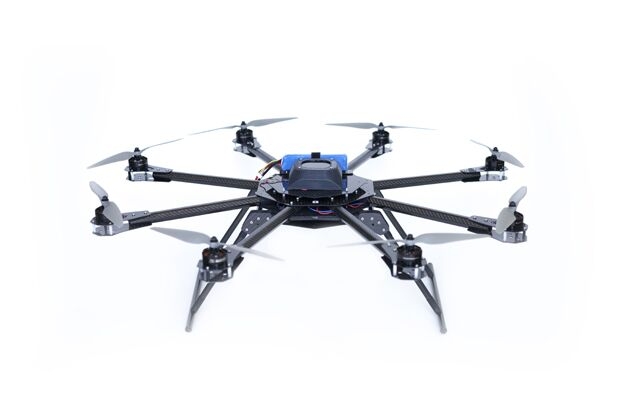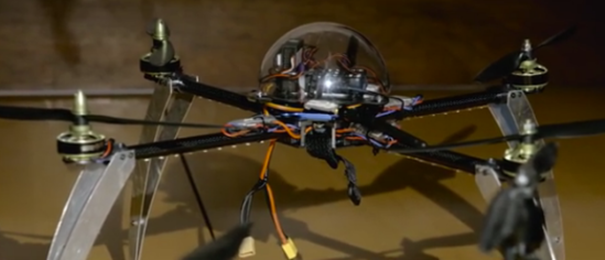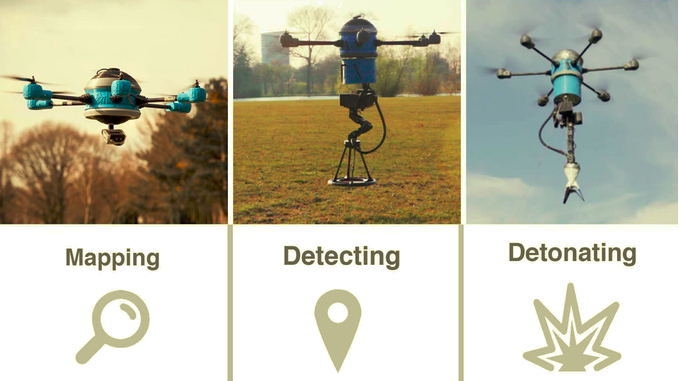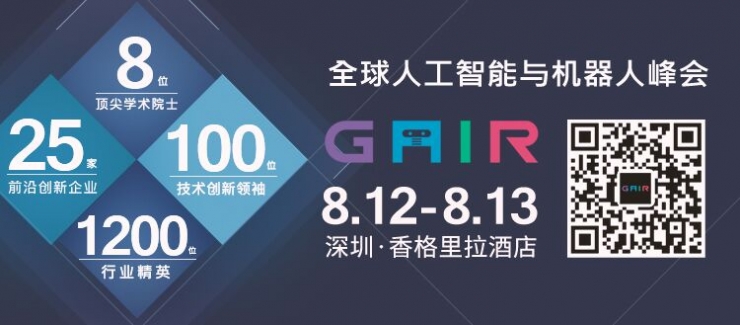
According to Care.org, there are about 110 million landmines left in the world, and thousands of people are killed each year. According to data analysis, the removal of these mines using conventional techniques may take more than 1,000 years. To improve efficiency and reduce risks, many drone solutions have begun to address these issues.
Recently, a drone product named Mine Kafon Drone (hereinafter referred to as "MKD") appeared in people's eyes and publicly raised funds in Kickstarter. In fact, drones related to land mines are not new. So far, the types of drones that are specifically used for mine clearance have also been relatively large. However, most dredging drones and consumer drones on the market are There is not much difference, just add laser radar and infrared detectors, etc. They mainly play a role in finding the minefield and locating the approximate location of the mine. In other words, such products can only be detected and they cannot be excluded. The innovation of MKD lies in the fact that the product has more accurate positioning technology based on the above-mentioned functions, and the additional robot arm can directly perform mine clearance .
At present, mine-clearance drone products are mainly divided into three categories, each of which has its own functional appeal:
LIDAR minefield 3D mapU.S. unmanned aerial vehicle company ArchAerial has introduced a new type of drone that can be used to detect bombs. Previously, ArchAerial's products were mostly commercial-grade drones, mostly used in agricultural mapping and archaeological research. At the SXSW Art Festival, ArchAerial CEO Ryan Baker announced that the company is working on a drone prototype that can detect unexploded bombs.
The drone adopts an eight-rotor design and is equipped with a laser radar (LIDAR). Its remote sensing technology can accurately map the 3D map of the earth's surface and outline a safe road without bombs for use by people.

It is reported that the first mission of the ArchAerial drone is to be implemented in Laos. During the Vietnam War that lasted for more than a decade, the United States had already dropped nearly 2 million tons of explosives in the area. It is estimated that 80 million hockey bombs still remain scattered in every corner of the country.
Infrared camera plant identificationThe advantage of a drone is that it can quickly capture high-definition images of the ground surface. The research team at the University of Bristol in the UK is developing a high-frequency imaging technology that can be identified through the use of explosive chemicals on vegetation. Whether the land is a minefield.

Dr. John Day pointed out that drones can shoot infrared images so that people can quickly learn about potentially dangerous areas. Unexploded or hidden mines in the green space are often difficult to see, but it is easy to distinguish the mines from the surrounding objects through infrared cameras. Chemicals that explode in minefields slowly ooze out over time. These chemicals are absorbed by the plants. Contaminated plants are clearly in contrast to plants in non-mining areas, although the human eye cannot distinguish them. The UAV uses hyperspectral imaging technology to detect subtle changes in plant inhalation chemicals through the plant's reflected near-infrared spectrum. When these unhealthy plants are found, people may find minefields.
The project officially began in early 2016, and the charity, Find A Better Way, funded the project.
Automatic mine clearanceThe above two types of drones are more common, but they only use drones to find minefields, but they do not use drones to clear mines. Recently, the company has developed a drone MKD that automatically maps and detects and automatically eliminates mines . Its development team stated that their goal is to use the MKD to remove all landmines on Earth in less than 10 years.
The MKD drone has six rotors and three attachments. The first annex is used to map the mine clearance area. The second annex is a metal detector to detect mines and use GPS to mark the location of mines. When the drone finds where the mine is located, no one will fly back to the operator. The operator replaces its metal detector with a robotic arm and then flies to the minefield. The demining process is to put tennis-sized small explosives above the position of the mines through the robotic arm first, then return to the safe range, and finally detonate the mines.

The MKD design team stated that the speed of mine clearance by this method is 20 times that of conventional mine clearance technology, and the cost is only 1/200 of the latter. The leader of the MKD team is Massoud Hassani of Afghanistan who had previously developed a mine-sweeping device called "Mine Kafon". Mine Kafon is shaped like a tumbleweed. It is powered by the wind and can roll over land mines to detonate mines in this way.
The product is still facing some technical problems that need to be resolved. The first is to find landmines that are buried for a long time, and the second is to accurately locate mines.
Since the MKD drone can only fly 4 cm above the ground, it is difficult to find land mines that have been buried for decades in this environment. In addition, since the MKD drone relies mainly on the GPS system for accurate positioning, The actual operation is also very tricky. The MKD team plans to use external antenna triangulation to improve GPS positioning accuracy.
Hasani is currently raising money for the MKD drone on the crowdfunding platform Kickstarter with a target financing of 70,000 euros. The money will be used to improve the MKD design, develop base stations, test drones in different environments, and train operators.

Mini Pc I7,Mini Pc I5,Portable Mini Pc,Mini Pc I3
Shenzhen Innovative Cloud Computer Co., Ltd. , https://www.xcypc.com